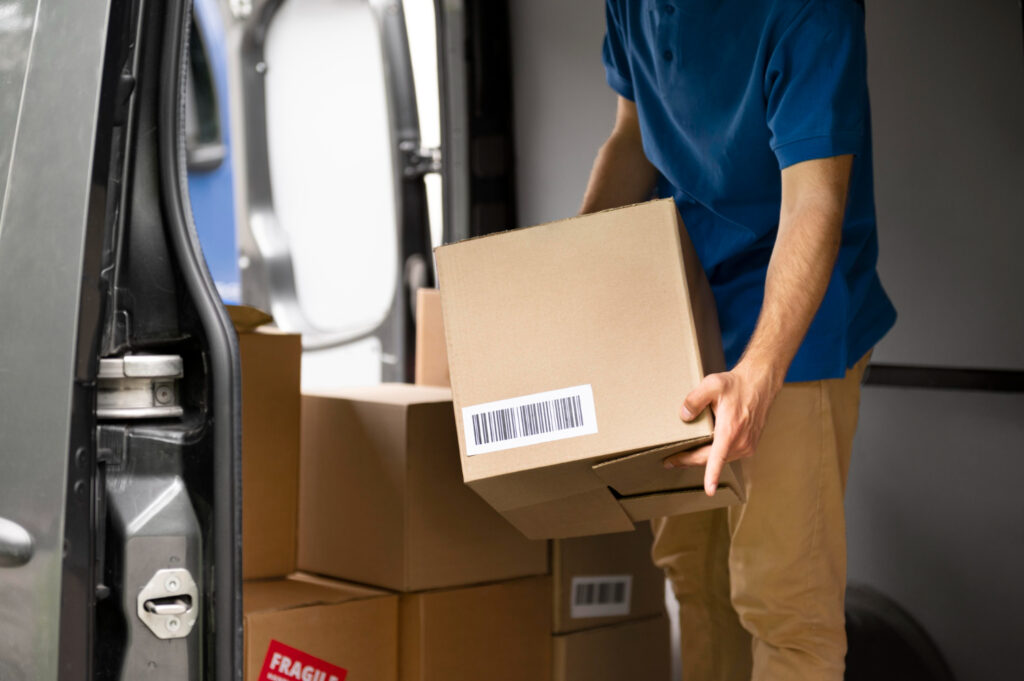As technology has advanced and global trade has grown, shipping and delivery have become increasingly important components of our lives.
Whether it’s a package being sent across the country or around the world, understanding how to navigate these logistics can make or break an individual or business’s operations.
In this blog post, we’ll dive deep into the differences between shipping and delivery–what each process entails, their respective advantages/disadvantages for businesses, strategies for mitigating risk during transit and much more!
By unpacking everything from freight forwarding regulations and parcel investigation to shipment tracking systems, you’ll get all the info you need to make sure your shipments are fast-tracked safely on their way!
Shipping vs. Delivery Definition
Shipping
Shipping is a critical part of any online business, as it is the method through which orders are transported from the seller to the customer.
It involves preparing goods for shipment and handling, packaging and labeling them, transporting them to the intended destination and delivering them in a way that meets customer needs and expectations.
Shipping plays an important role in providing customers with a pleasant shopping experience, so it’s essential for any business to ensure that orders are shipped quickly and efficiently.
This requires adequate planning and coordination to ensure that goods arrive in the right condition, on time and at the right cost.
Businesses must consider a variety of factors when planning their shipping processes such as the geographical location of their customers, the type of goods being shipped and the cost. They must also be aware of any regulations that apply to shipping, such as customs duties and taxes.
Delivery
Delivery is the end stage of shipping when goods are actually transferred or handed over to the customer. This can be done in a variety of ways depending on the size and nature of the shipment—from home delivery services to self-collection at a store or other designated spot.
Delivery is usually one of the last steps that customers take before they complete their purchase, so it is an important part of the wider shopping experience.
Businesses must ensure that their delivery process meets customer needs and expectations—from providing clear instructions on how to receive goods to being flexible with delivery timeframes.
Ultimately, a successful delivery will lead to satisfied customers and improved retention rates. It is also important that businesses have procedures in place to track and document deliveries, so they can respond promptly to any challenges or complaints.
Understanding The Differences Between Shipping And Delivery
Shipping is the process of transporting goods from one place to another. It involves packing and labeling the items, as well as getting them safely to their destination. Delivery is the final part of this process when the items are handed over to the customer or recipient.
When arranging a shipment, it’s important to understand both processes involved in getting the goods to their destination. Depending on the situation, different methods may be more suitable than others for a particular shipment.
Shipping generally involves selecting a shipping company or carrier who will handle the packing and transportation of the goods. This can involve arranging for door-to-door delivery, in which case the shipping company needs to collect from its origin and drop the goods off at the final destination.
Alternatively, it could involve shipping to a warehouse for storage before delivery is made to the customer or recipient.
Delivery involves ensuring that the shipment arrives safely and securely at its final destination. This means making sure all paperwork is in order, as well as tracking any changes to addresses and other details.
Delivery also involves arranging any necessary customs or special handling requirements, in case the goods need to be cleared through customs.
Once delivery has been made, the customer or recipient should check that all items are present and undamaged before signing off on the shipment. This is to make sure that the sender can prove that the goods were received in good condition.
How To Choose The Right Shipping And Delivery Options For Your Business
Consider your business’s needs and budget
For businesses with tight budgets, going with the most cost-effective option may be the best choice. However, if you are willing to pay more for faster shipping and delivery, there are plenty of options available.
Also, consider the type of products you sell and their size when choosing a shipping provider; some items may require special packaging or shipping conditions that need to be accounted for.
Finally, ask yourself if your business will benefit from offering different shipping and delivery options. If a customer is willing to pay extra for quicker delivery, you may want to provide them with the option of doing so – this could lead to more sales in the long run.
Additionally, customers may want to select a specific type of delivery, such as curbside pickup or contactless delivery. If you are able to accommodate such requests, it could be beneficial for both you and your customers.
Research and compare different carriers and delivery services
Once you have an idea of the types of shipping and delivery services you want to offer, it is time to do some research.
Look into different carriers and delivery management systems and compare their rates, delivery times, customer service, and other factors that may affect your decision.
Keep in mind that some providers specialize in certain goods or offer special discounts depending on the number of items you are shipping. Taking the time to research and compare these services can help you make an informed decision about which provider is best for your business’s needs.
Test out different options to see what works best for your business
After you have narrowed down your choices, it is time to test out different delivery management softwares and see which ones work best for your business.
Choose a few services or carriers to start with and track the results over a period of time. This will give you insight into how well each option works and will help you determine which option is the most cost-effective and reliable for your business.
Once you have settled on a shipping and delivery provider, make sure to monitor how well they are performing. Be sure to ask customers for feedback about their experience so that you can ensure that all of your customers are satisfied with the service they receive.
With the right combination of research, testing, monitoring, and customer satisfaction, you will be able to choose the right shipping and delivery options for your business.
How Can A Delivery Management System Optimize Your Shipping And Delivery Process
A delivery management system (DMS) is an automated platform that helps businesses manage their shipping and delivery processes more efficiently.
This software simplifies the way deliveries are managed by streamlining key processes such as order fulfillment, route optimization, customer communication, and tracking.
By implementing a DMS, businesses can gain visibility over their entire delivery network, reducing errors and increasing customer satisfaction.
A DMS helps to optimize the shipping and delivery process by automating manual tasks, reducing costs, and improving customer communication. Automation can reduce tedious administrative tasks such as printing labels, creating manifests, and scheduling pickups.
This allows businesses to focus on delivering an exceptional experience without getting overloaded with paperwork or dealing with manual errors.
Additionally, by optimizing delivery routes, businesses can minimize costs associated with fuel and labor while reducing the risk of late deliveries.
DMS also helps improve customer communication by automating notifications via email or text that provide customers with real-time tracking information about their orders.
This keeps customers informed throughout the entire process and reduces the chances of customer dissatisfaction.
Shipping vs. Delivery
In conclusion, the world of shipping vs. delivery can be frustrating, especially if you’re new to the world of selling. But once you have a handle on the basics, it becomes much easier.
And using a delivery management platform like Detrack can help streamline the entire process so that you can focus on other aspects of your business.
So if you’re looking for an easy way to manage shipping and delivery, consider using Detrack. It’s simple, efficient, and cost-effective— everything you need to make sure your customers get their orders on time and in perfect condition.












